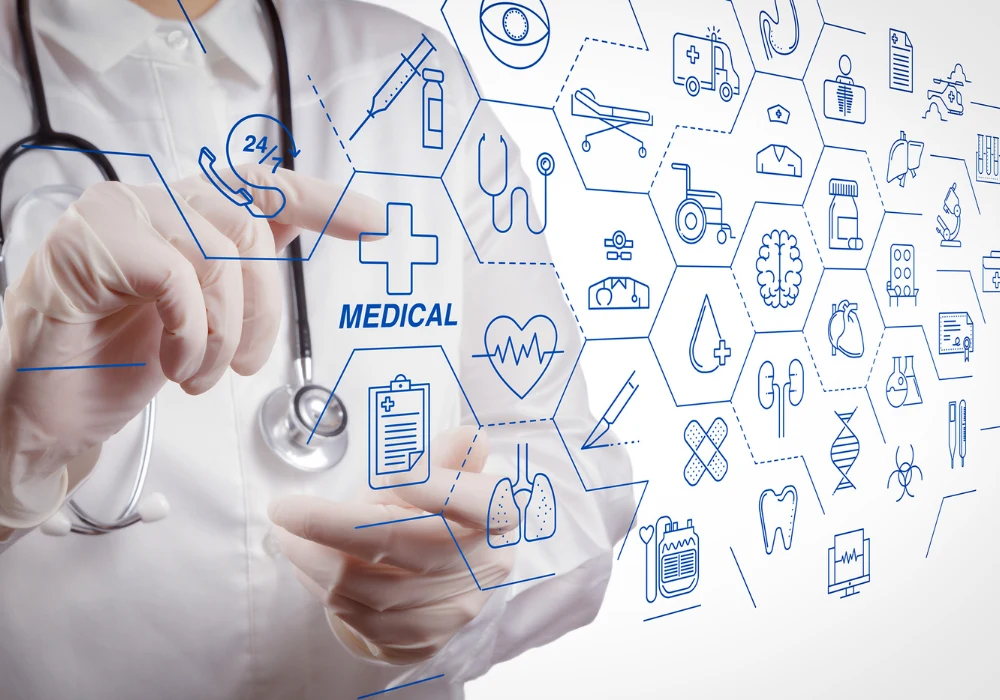Clinical encounters often capture only a fraction of what shapes health. Electronic health records (EHRs) record visits and treatments yet omit much of the day-to-day context that determines outcomes. Meanwhile, documentation burden and fragmented systems strain clinicians and dilute time for patient engagement. A more complete, real-time view emerges when information beyond the clinic is brought into decision-making. Wearables, claims, patient communications and admissions, discharge and transfer (ADT) feeds together create a fuller narrative. When combined with artificial intelligence and large language models to distil signals from noise, this broader dataset can surface timely, relevant insights. The result is a shift from reactive encounters to proactive care, where clinicians can identify risks earlier, focus energy where it matters, and support smoother transitions.
Limits of Legacy Records and Growing Strain
Relying exclusively on the EHR offers a partial snapshot. It documents interactions within a given organisation but misses key elements of a patient’s journey between visits and across settings. That narrow lens reduces visibility into adherence, functional recovery and the lived realities that shape behaviour. The gap is not just informational,it directly affects execution. By the time a patient returns, there may be little clarity on whether medications were taken, activity goals were met, or challenges emerged at home.
Must Read:Enriched Validation Boosts EHR Allostatic Load
Technology meant to streamline care has frequently added friction. Excessive documentation, inboxmanagement and unconnected data flows make clinical work more onerous. Evidence of this strain is clear. Estimates indicate that a primary care physician would need 26.7 hours each day to deliver guideline-recommended preventive, chronic and acute care alongside documentation and message handling. Emergency departments face their own pressures, with one in five patients arriving with a quite long medical history. Across settings, clinicians spend over 16 minutes per encounter navigating the EHR rather than connecting with patients. These figures point to a structural problem: more information exists, yet it is not presented in a way that supports timely decisions.
Integrating Wearables, Claims, Communications and ADT
A broader, integrated dataset closes the gaps left by encounter-centric records. Everyday devices such as smartwatches and fitness trackers generate continuous data on activity, heart rate and sleep. Trends in these measures can signal emerging concerns, such as declining activity or early signs of depression and help monitor recovery after discharge. Rather than waiting months to assess progress, clinicians can intervene when trajectories change.
Claims data complements clinical notes by showing where patients receive care, which prescriptions are filled and what procedures are performed, often beyond the reach of a single EHR. This longitudinal view can reveal unfilled prescriptions, duplicative testing and services obtained in other locations. Knowing that a patient recently underwent a CT scan in another clinic, for example, can prevent unnecessary repeat imaging and reduce risk and cost.
Patient communications add essential context that is easy to overlook. Calls, secure messages and staff notes may capture barriers such as affordability issues or intolerable side effects that explain non-adherence. Analysed systematically, this stream highlights obstacles before they become crises and surfaces social determinants that require attention.
Finally, ADT feeds deliver real-time signals when patients are admitted, discharged or transferred. Unlike claims, which can lag by months, these alerts enable rapid follow-up during the critical post-hospital window. Prompt contact after discharge supports smoother transitions, helps prevent readmissions and ensures care plans are reinforced when patients are most vulnerable.
AI and LLMs for Focused, Timely Decisions
Introducing more data alone is not sufficient. Without intelligent filtering, the volume can overwhelm even the most diligent clinician. AI and LLM tools address this by synthesising disparate inputs into concise, prioritised insights. Instead of sifting through numerous EHR entries, claims records and wearable feeds, clinicians can receive a focused summary at the point of need. A single view might highlight a missed medication refill, declining activity and a recent emergency department (ED) visit, prompting a targeted outreach.
The value lies in presenting the right information at the right moment. By reducing cognitive load, these tools allow clinicians to concentrate on judgement and human interaction. They support earlier interventions, more personalised guidance and a shift toward precision in routine practice. Importantly, the aim is not to add technological layers but to deploy systems that work with clinicians rather than against them, aligning information delivery with clinical workflows.
Care grounded solely in encounter records leaves important questions unanswered between visits. Incorporating wearables, claims,communications and ADT data creates a more complete and timely view that supports proactive action. When AI and LLM capabilities distil these inputs into actionable summaries, clinicians can focus on patient-centred decisions, reduce duplication and address problems earlier.The way forward is clear: fewer fragmented systems, more meaningful signals and a practical route to efficiency that preserves attention for the work that matters most to patients and professionals.
Source: MedCity News
Image Credit: iStock







